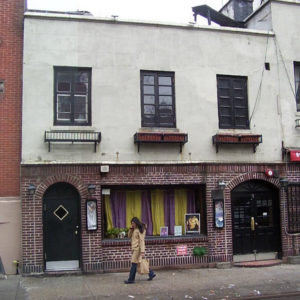1969
Stonewall and Its Aftershocks
In the early morning hours of Saturday, June 28, police raided a gay bar in New York City’s Greenwich Village. Police raids on gay establishments were common at the time, but this time something was different. While raids usually took place in the early evening hours, this one took place after midnight while the bar was filled with patrons. Police questioned the clientele, made them show identification, and a few were even arrested.
The customers formed a crowd outside the bar as it was emptied and arrests were made. As the people arrested were loaded into a paddy wagon, the crowd turned on the police. Angry words escalated into violence as bottles and punches were thrown. The angry scene quickly grew beyond the control of the police as local residents and patrons of other nearby bars joined the growing crowd and the police had to retreat for safety into the very bar they had raided.
The riots continued for five days and by the time it was over, the gay community across the country had been galvanized by the images shown on the nightly news. In the aftermath following Stonewall, the gay community began to organize and gay rights groups began to form around the country. It was the Era of Viet Nam, Woodstock, and the Counterculture movement and many of the first gay rights groups to form were radical-sounding organizations such as the Gay Liberation Front or the Gay Activist’s Alliance.
In a time before the instant exchange of information was available on the internet, word of the budding movement spread surprisingly fast. Gay publications such as The Advocate and local gay newspapers and magazines were the main source of information and inspiration for the founding of local chapters of gay organizations around the country.